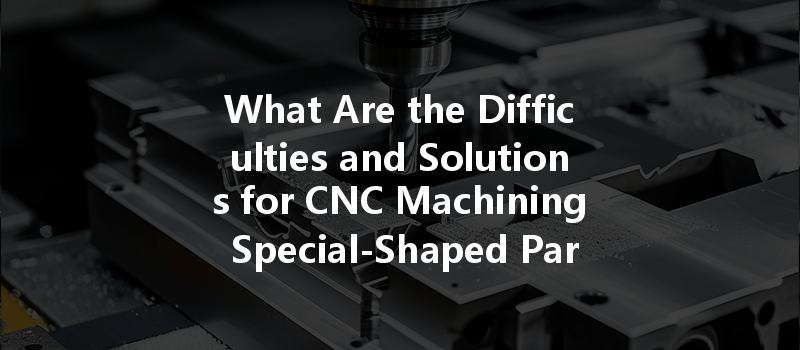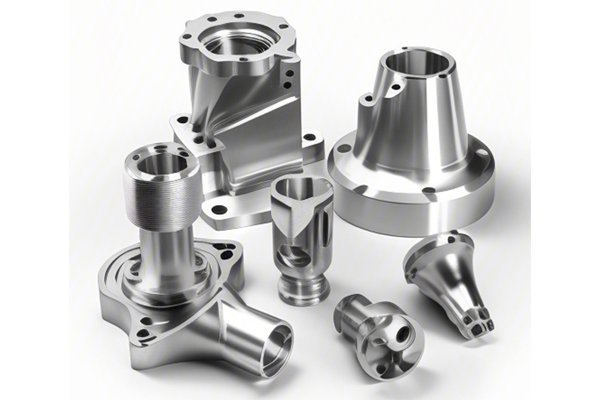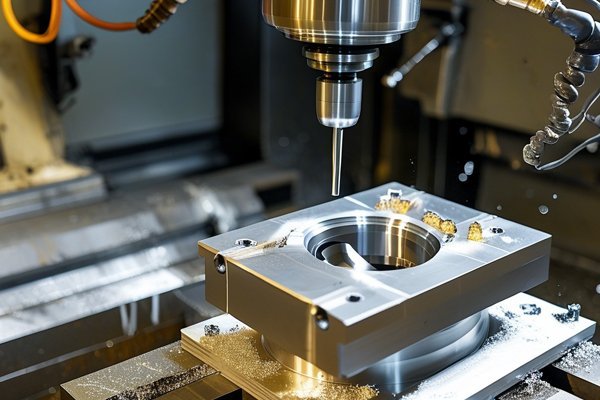Opening
Did you know that CNC machining has revolutionized the manufacturing industry by allowing for the mass production of complex geometries that were previously thought impossible? In fact, according to industry reports, CNC machining is expected to reach a staggering market value of $117 billion by 2026, showcasing the growing demand for efficient and precise manufacturing solutions. However, while CNC machining has its advantages, the production of special-shaped parts introduces a unique set of challenges that can hinder efficiency and quality. In this blog post, we will delve into the difficulties faced in CNC machining of special-shaped parts and offer comprehensive solutions to these problems.
Understanding CNC Machining and Special-Shaped Parts
CNC, or computer numerical control, machining is a process that utilizes computer software to control machine tools in fabrication. This advanced technology allows for the precise manufacturing of parts by translating a digital design into a physical product. Special-shaped parts refer to components with intricate designs, specific angles, and unique curves that do not conform to traditional geometric shapes. These parts are commonly required in industries such as aerospace, automotive, and medical devices, where precision is critical.
Difficulties in Machining Special-Shaped Parts
Special-shaped parts often feature complex geometries that can be challenging to program into CNC machines. The intricacy of curves, angles, and contours requires advanced modeling and programming skills to ensure accuracy.
The tools used in CNC machining may not always be suited for special-shaped parts. Standard cutters might struggle to reach certain angles or depths, leading to subpar finishes and increased cycle times.
Different materials present varying challenges during the machining process. For instance, hard metals may wear tools faster than softer alternatives, while fragile materials may break or chip, requiring specialized handling and tooling.
Machining special-shaped parts often involves multiple setups, as the parts may need to be reoriented in the machine to access different sections. This can increase the chances of misalignment and human error during setup.
Many special-shaped applications require high-quality surface finishes to meet engineering tolerances and aesthetic requirements. Achieving such finishes can add layers of complexity to the machining process.
The intricacies of machining special-shaped parts can lead to higher production costs, whether due to longer machining times, specialized tools, or increased waste from trial-and-error approaches.
Solutions to CNC Machining Challenges
Utilizing advanced Computer-Aided Design (CAD) and Computer-Aided Manufacturing (CAM) software is crucial for successfully machining special shapes. These tools can simulate machining processes, allowing manufacturers to pinpoint potential issues in the design phase, thereby reducing the likelihood of errors during actual production.
When standard tools fall short, investing in custom tooling can significantly improve outcomes. Specialized tools designed specifically for unique geometries can prolong tool life, enhance cutting speeds, and promote better surface finishes.

Evaluating the properties of materials before machining can help in selecting the right combination of tools and machining parameters. Collaborating closely with material suppliers can yield recommendations on the most suitable materials based on the specific engineering requirements of the special-shaped parts.
To minimize the risk of misalignment, manufacturers should adopt strategic setups and fixtures that ensure consistent positioning of the part during the machining process. Employing CNC indexing fixtures can allow for automated repositioning, enhancing accuracy and simplifying complex machining tasks.
Leveraging multi-axis CNC machining allows manufacturers to machine special-shaped parts holistically. These advanced machines can approach the workpiece from various angles without needing to reorient the part, reducing setup time and improving precision.
To achieve the desired surface finish, manufacturers can implement post-processing techniques such as polishing, sanding, or coating. These methods can address surface imperfections that arise during machining, resulting in parts that meet stringent quality standards.
Investing in the training and development of CNC operators ensures they remain updated on the latest technologies and techniques in the field. Continuous education will also empower operators to troubleshoot issues as they arise, improving overall productivity.
Establishing stringent quality control protocols, such as in-process measurements and inspection techniques, can help in early identification of defects and deviations from specified tolerances.
Involving engineers, machinists, and designers in the early phases of product development can yield valuable insights into feasible designs that are easier to manufacture while still meeting performance criteria.
Keeping abreast of emerging technologies, such as additive manufacturing or hybrid machining processes, can offer additional avenues for producing special-shaped parts that may be difficult to achieve through conventional CNC machining alone.
The production of special-shaped parts using CNC machining presents unique challenges that require innovative solutions and strategic thinking. From understanding the complexities of complex geometries to investing in custom tooling, the methodologies outlined in this blog aim to empower manufacturers to overcome these difficulties successfully.
As the demand for complex designs grows in industries worldwide, it is crucial to remain intelligent about the options available in CNC machining technologies. Embracing advanced CAD/CAM, multi-axis machining, and continuous operator training can result in enhanced efficiency, reduced costs, and high-quality outcomes.
This discussion is not only vital for manufacturers but also for engineers and designers who must collaborate to create functional, manufacturable parts. By leveraging these insights, businesses can ensure they remain competitive and prepared to meet the ever-evolving demands of their industries. The future of CNC machining holds promising advancements, and remaining informed and adaptable will be key to thriving in this dynamic landscape.
—






